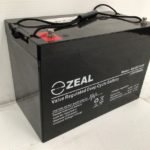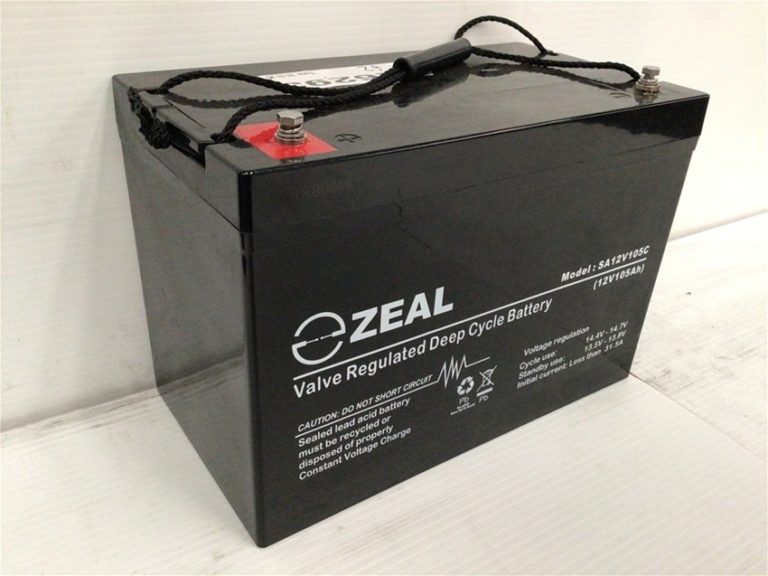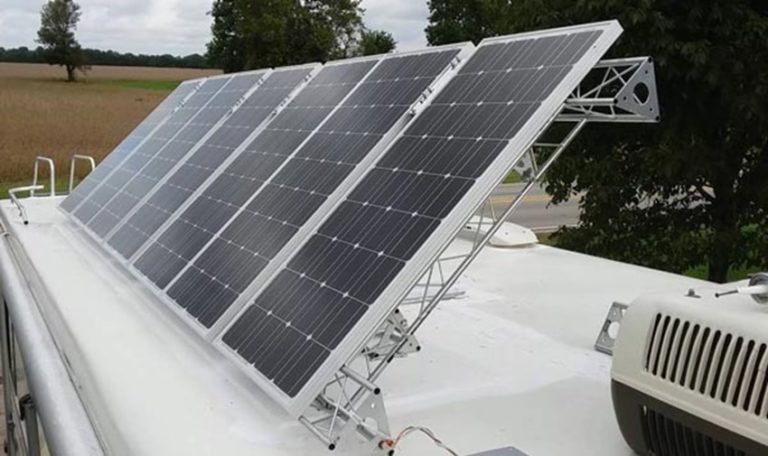If you’re keen on camping, fishing or the odd off-roading trip, then you’ll need a dual battery setup to power all the goodies that you just can’t do without. A dual battery setup consists of your car battery and a secondary deep cycle battery. The car battery will be fine under the bonnet, but where do you house the auxiliary battery when space is limited and when safety comes into play?
A simple answer is a dedicated battery box. This will keep the battery safe from the weather, prevent knocks or potential spills, and provide convenience with multiple power outlets. The box will safely store the battery where you deem fit, without having to worry about damage, potential hazards, or reducing battery efficiency.
What are Battery Boxes?
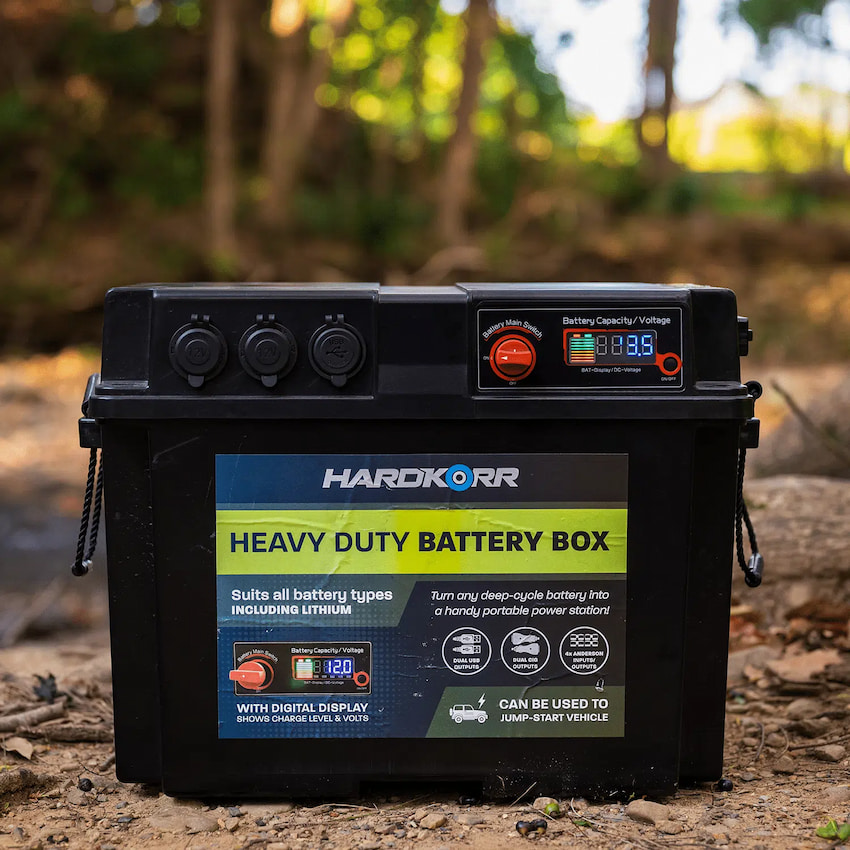
Battery boxes are containers made of hard-wearing ABS plastic meant for storing deep-cycle batteries. The aim is to keep the battery (and car occupants) safe at all times if something does go wrong. In addition, most battery boxes for sale feature a range of connections (USB ports, cigarette outlets, and Anderson plugs for charging accessories) and charging ports that hook up to a solar panel, DC-DC charger, or wall outlet. They pack safety and convenience in one nifty unit.
Why You Want One
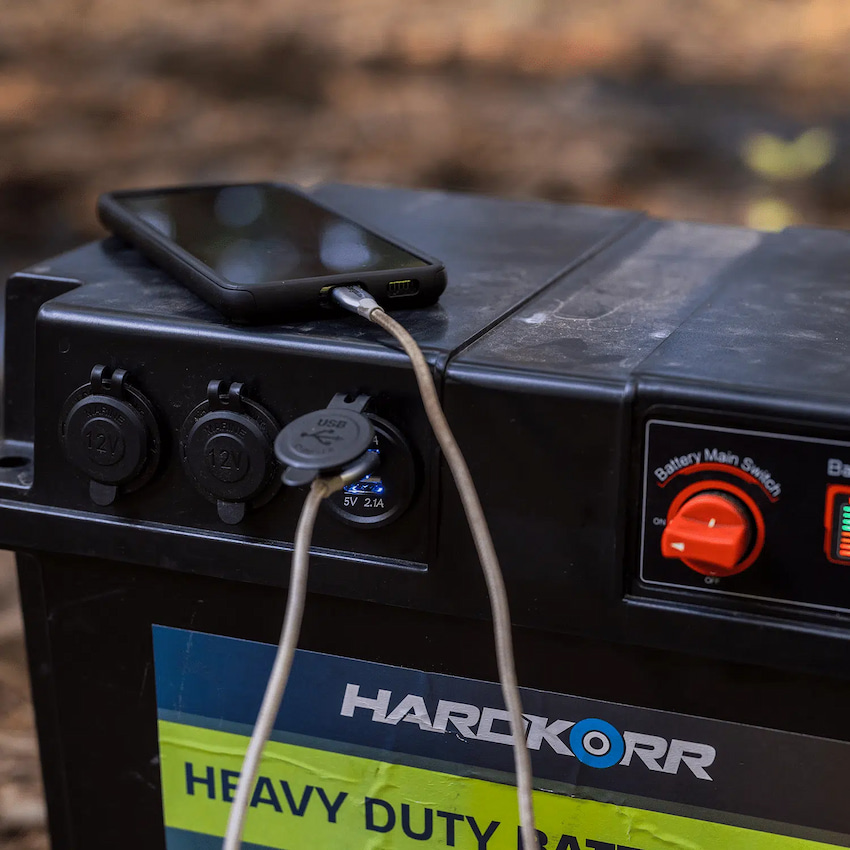
There’s safety, durability, protection, convenience, and portability in spades. The tough plastics will contain any water or acid spills, as well as toxic fumes in lead acid batteries. Boxes are also heat and UV-resistant. This prevents potential health hazards to passengers and damage to the car.
Batteries are often used outside and can collect dust, dirt, or water. In addition, the battery can sustain knocks from cargo when in the boot, or from mishaps at the campsite. Both can cause short-circuiting or even electrical fires. With the battery safely stored in a battery box, the chances of this are virtually nil.
Keeping the battery stored means that you’ll get the most out of your investment. Deep cycle batteries are expensive to buy, so it’s only common sense to spend a few dollars more to keep that investment safe. You’ll be prolonging the life of the battery, and allowing it to perform at its best.
Lastly, a battery box is a decent place to store the battery if your car hasn’t got that additional space under the bonnet. What’s more, the compact and lightweight design are easy to handle, meaning you can take the battery wherever it’s needed.
What to Look for in Battery Boxes
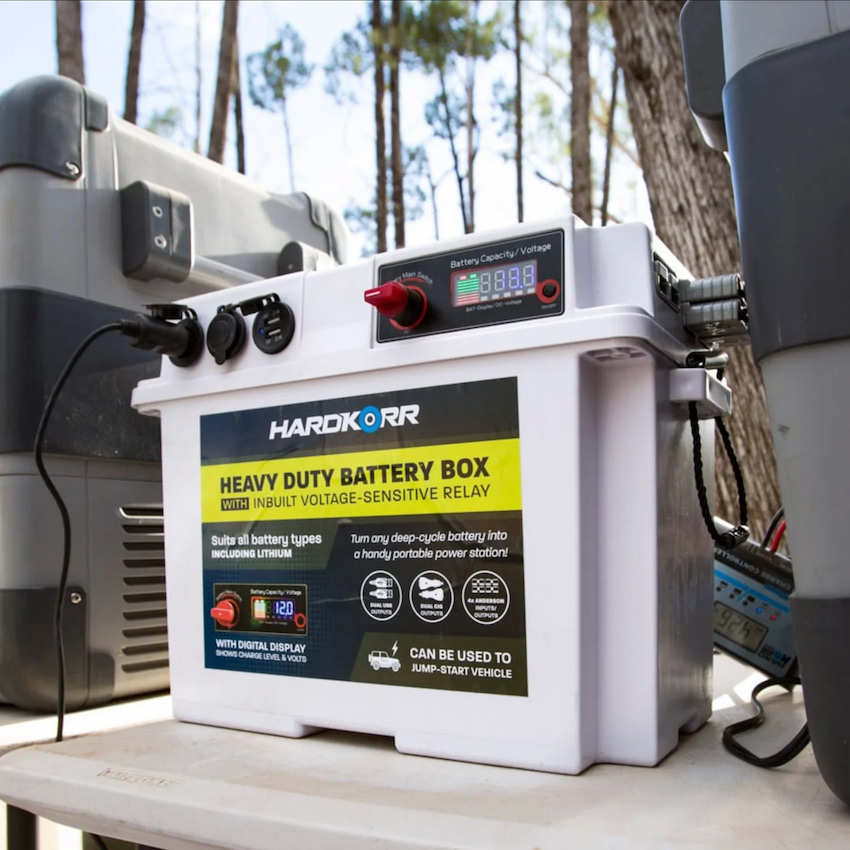
Like most things, battery boxes for sale aren’t created equal. You’ll need to consider size and battery compatibility; the level of build and durability; ease of use and portability, and the number and type of outlets. Additional features, like fuses or integrated inverters, and the ease with which boxes allow for safe charging of the deep-cycle battery (in a dual battery setup) with the engine running, are just some other points to have in mind. Prices aren’t all that different from basic to fully-featured boxes, so if you like value, spend your cash on things that matter.
• Size – Deep cycle batteries in 100Ah are more than enough to power all appliances and devices for the duration of the weekend. As such they’re a larger option in terms of overall size and weight. Battery boxes can accommodate these with ease, and even fit larger 120 or 140Ah AGM or Lead Acid batteries. More costly Lithium Prismatic batteries with even higher capacities (300+Ah) retain similar dimensions and will also fit.
• Battery Compatibility – Sealed AGM batteries are the ones most buyers go for and will work perfectly fine in a battery box. More consideration should be put towards flooded Lead Acid batteries in terms of ventilation, especially if batteries and boxes are to be used inside motorhomes or caravans. Lithium batteries require more complex circuitry, but these too are well catered to in a battery box. To be on the safe side, check that the box you’re getting is compatible with your type of deep cycle battery.
• Build and Durability – To resist dust and water ingress, check for IP ratings. These should also tell you if the battery box will last in more serious impact without damage to the battery inside. Overall construction consists of a solid base and side walls, and sealed lids. In addition, check the quality of the outlets and cabling (often located along the lid). Cables in thicker gauges allow for quicker and safer charging, while 12V outlets with integrated fuses safeguard appliances and devices should anything go wrong.
• Ease of Use, Portability, and Connections – Handles located on either side and just under the lid helps in handling and moving the battery and box to where it’s needed. Boxes are sturdy enough to carry the weight of the battery and the supplied accessories. Straps are provided with most boxes for tying down, especially useful in moving vehicles.
The lid is where the majority of connections are found. Go for boxes with a range of outlets, and a secure charging port, often a higher-rated Anderson plug that allows connecting the box to different charging options without too much hassle. During the whole process, the battery stays put and the lid closed, so safety is also well thought out. Some manufacturers have packaged padded trays and mounting kit if you plan on fixing the box to the boot floor, in a trailer or caravan.
• Additional Features and Accessories – Nice features to have are LCD displays that tell users the amount of charge in the battery. Some boxes also display the remaining time until the battery needs recharging. Batteries can additionally be charged from the car crank when connected with a dual battery wiring kit and voltage-sensitive relay to control the level of charge the secondary battery receives. Jump-start leads work the other way round, letting you get enough juice into a near-flat car battery from the secondary battery in the battery box to start the car. All handy features to have and none won’t break the bank. Some are packaged with the box itself, while others (special chargers for Lithium batteries for example) are sold separately.

